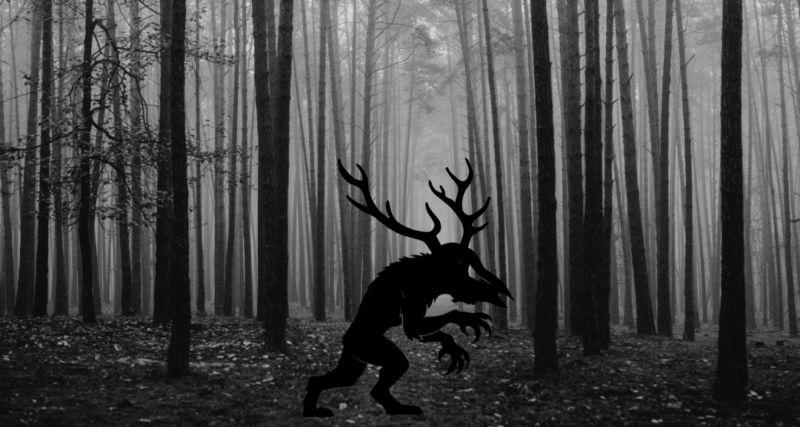Gods and Monsters: The Wendigo
Eve Volungeviciute
We are slowly running out of monsters to talk about… not. The list is endless and here we are with yet another entity, the Wendigo. While there might not be as much information on this one as some other creatures, that doesn’t make them any less interesting. Let’s begin!

Origins
The wendigo is not just an entity on its own, it also forms a part of a belief system of Algonquin-speaking people. Some of them include the Ojibwe, the Saulteaux, the Naskapi, and the Innu. Albeit with some variations, the wendigo was mostly described as a supernatural creature with malevolent cannibalistic tendencies. They were mostly associated with winter and cold conditions.
Appearance
The wendigo was described as gaunt with desiccated skin pulled tightly over its bones, an ash-grey complexion, and its eyes pushed deep into their sockets. It was also said to have smelled of decay and death. They were also thought to have been much larger than human beings, although that part applied only in some of the cultures. According to Ojibwe and Cree beliefs, wendigos would adjust their size post consuming another person, leading to a permanent feeling of starvation. Therefore, it is seen as the embodiment of gluttony and excess, constantly searching for new victims.
Human cannibalism
In some version of the lore, humans overpowered by greed could turn into wendigos. The myth worked as a method of encouraging cooperation and moderation. Other, arguably more popular, sources say that wendigos were created when a human resorted to cannibalism to survive. According to some myths, humans could also turn into wendigos by being in contact with them for too long.
Psychosis and historical context
Wendigo psychosis was a historical term to describe humans that became possessed by the wendigo spirit after being in a situation where they needed to resort to cannibalism to survive. Native Americans also used wendigo lore to explain the colonisation of their land in a more subtle way, with wendigos portraying the people who showed up and evicted them from their land.
In general, they were used as an example of human consumption, greed and materialism, although that’s more from a psychological lens. Romantic scholar Emily Zarka observed that the geographical location of Algonquian language speakers contained harsh winters, which could lead to starvation. According to her, the wendigo was symbolic for the incarnation of winter, the embodiment of hunger, and the personification of selfishness.
Portrayal in the media
One of the first wendigo appearances was in Algernon Blackwood’s 1910 novella The Wendigo. Literary critics note that this was the turning point for the portrayal of the wendigo we see today in the works to showcase that followed, such as The Thing that Walked on the Wind and Ithaqua by August Derleth. These novels therefore inspired the supporting antagonist from Pet Sematary by Stephen King. In his book, the wendigo is featured as evil personified with yellow eyes, ram’s horns for ears and a pointed, decaying yellow tongue. This type of imagery eventually replaced the Native American lore.
A character inspired by the wendigo appeared in comic books published by Marvel Comics in 1973. The creature is portrayed more like a silver-haired Bigfoot being. It first appeared in The Incredible Hulk #162 (April 1973), and again in the October 1974 issue. Contemporary Indigenous features that explore the entity are the 1995 novel Solar Storm by Linda K. Hogan as well as the 2016 novel Wrist by Nathan Niigan Noodin Adler.
Other pieces of media, such as film and television were Ravenous (1999), The Lone Ranger (2013) and Antlers (2021). In the last one, the wendigo is showcased as a creature resembling a deer with a glowing heart that moves from person to person, infecting them with everlasting hunger.
A more modern and well-known wendigo feature is surprisingly in the gaming community. The interactive horror game Until Dawn (2015), which received a remake last year, features Wendigos as the main villains. The narrative follows a more standard wendigo lore, with the game set in a former Native American territory which is replaced by holiday lodges for rich white people, offering commentary on colonialism that is so ingrained in the mythology. Fallout 76 (2018) also features wendigos as one of the enemies in the Appalachia area, depicting them as mutated people who consumed human flesh while in isolation.
Criticism
Some scholars hold different opinions on the wendigo portrayal as antagonists in popular media. Francesca Amee Johnson criticised this in her undergraduate research journal, saying that Until Dawn, The Retreat (2020), and Supernatural (2005–2020) are created by mostly non-native writers and therefore cannot be truly authentic in their narrative.
According to Johnson, ‘this construction is problematic in the horror genre as it presents an Indigenous antagonist that poses a threat to white culture for its otherness and indigeneity – while at the same time, misappropriating, discarding and demonising the Indigenous culture the myth comes from, at whim.’
